Solo Exhibition, Medium Gallery, Bratislava, 2018
Author: Diana Cencer Garafová
Curator: Zora Rusinová
Technical support: Peter Beňo
Duration: 22. 2. – 11. 3. 2018

Photo: Ján Šipöcz
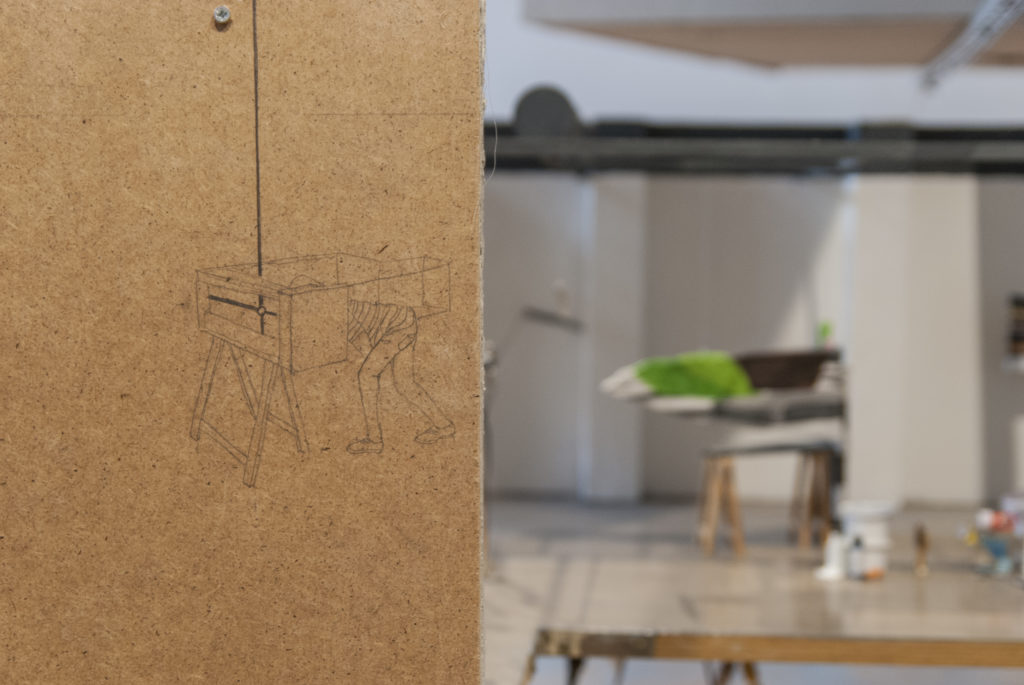
Photo: Ján Šipöcz
Project Breaking (b)it – Spontaneous symmetry breaking by Diana Cencer Garafová has in a bit enigmatic name to research and reflections about knowledge in her theoretical thesis. Her topic was inspired by the world nature to be solved by physic and its interpretation models of space research, e. m. of that if and how the world is knowable. And why this coherence talks about “symmetry disruption” to be reflected in the name. Garafová is especially interested in spontaneous process of disruption of this symmetry as the regular order. According to contemporary scientific theories namely this process seems to be the most important for life birth because “the possibility of our existence falls in imperfection of nature and not in perfection of nature´s laws and specially symmetry disruptions enable that space makes felt space in an endless diversity of complicated states but in holdback of certain symmetry – so, it is complicated and simple at the same time.“ And what does it mean in the name that „(b)it“? Knowledge is based on information. Here, Garafová calls to ideas of John Wheeler „It from bit“, describing that the world consists of information and this information in a following moment has influenced other physicists. These questions flow into both parts of relation research between it and bit – e. m. on one hand idea / invention / information, on the other hand mass / configuration / form. They are reflected into the exhibition project the relation between reality and model are examining and miniatures form installations (possible and impossible) placed into models of existing galleries of Bratislava in gauge 1:10. More of models cover in their heart mini installation based on optical illusion.
Project for Gallery Medium in doing so is not the first but it interlocks to public presentations of art works Diana has realized. This time, these models of exhibition spaces are appositioned into asymmetric architectonic tower outfit on each other and they are presented in a way that some of models are reachable directly by spectator look; some of them are reachable in a mediated way – with camera which constantly moves itself in about vertical ax from the floor to ceiling, it stops and in some second takes pictures always in a certain concrete model of exhibition space with nested optic illusion.
This look is directly projected to the wall in an opposite part of room, and in this way it enables to look at the models to be placed highly above his head. Garafová´s models of exhibition rooms are analogies of theoretical interpretation models of the world knowledge. We are victims of these models which do not intermediate reality such as it is but that is what we think about it is? Respectively, they do not always intermediate us these models but only in a certain visual angle. And in a theoretical physics there are that is to say examined cases isolated from reality because they advance in an artificially created conditions which “in reality” do not exist – in similar as the author´s ideas personified in medium models. The importance is not in the look what we see but what we interpret. And it is just the space of fine art where the spectator has decisive status during the art work interpretation – description of its signs, decoding of report, setting them into the context, understanding of its sense etc. As the author states in her thesis, full knowledge of reality is not possible because we are not able to monitor them without their being part of reality and every effort for objectivity is in advance fruitless, and because of subjective experience is connected to our observing.
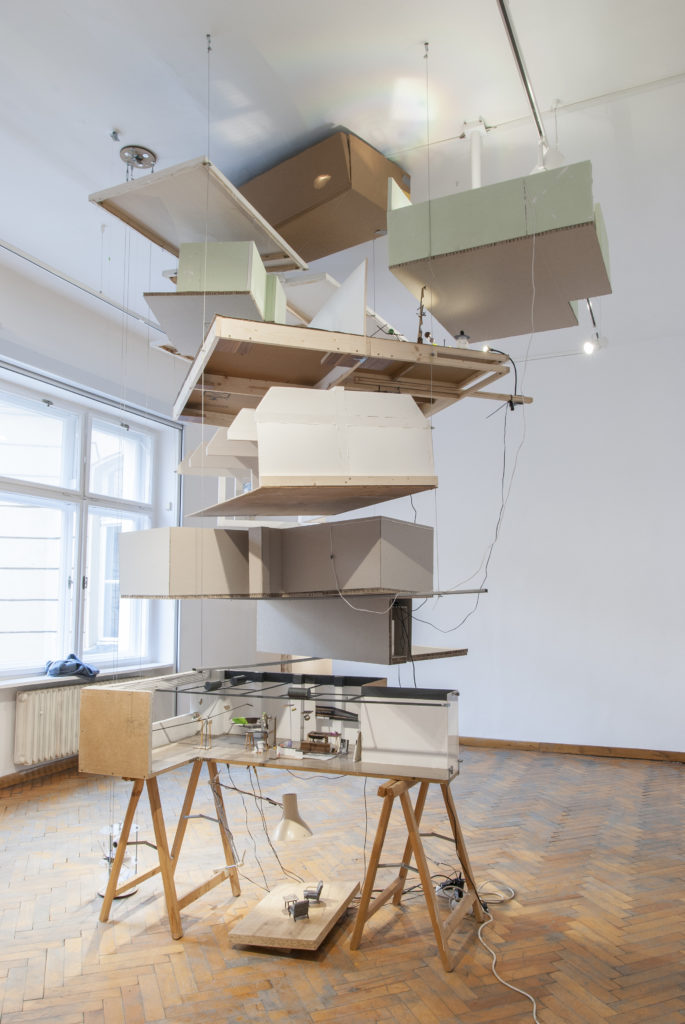
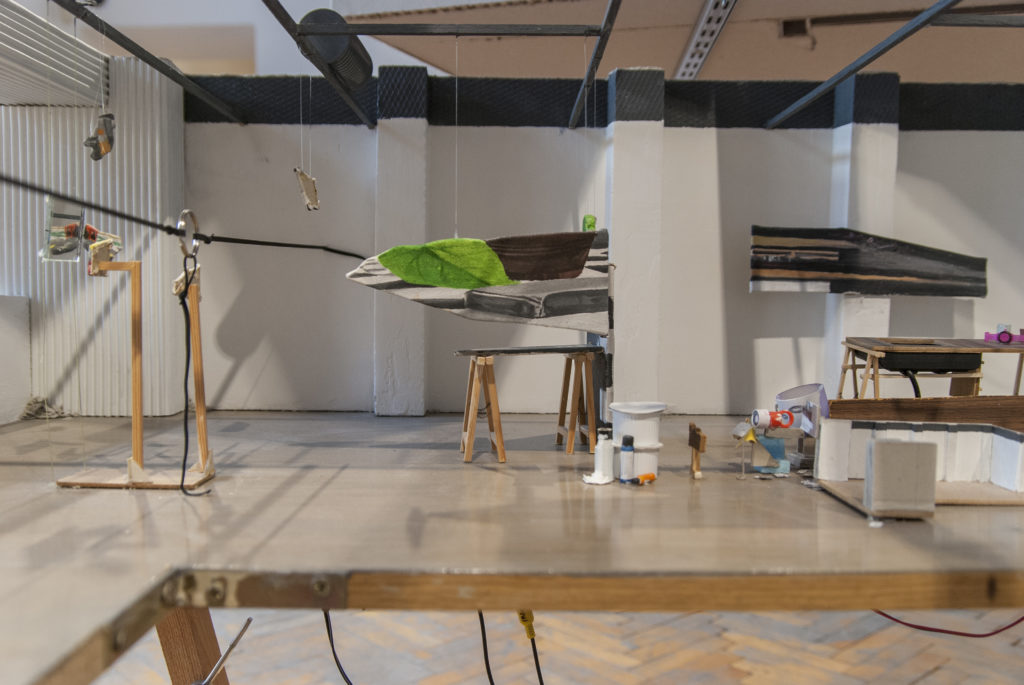
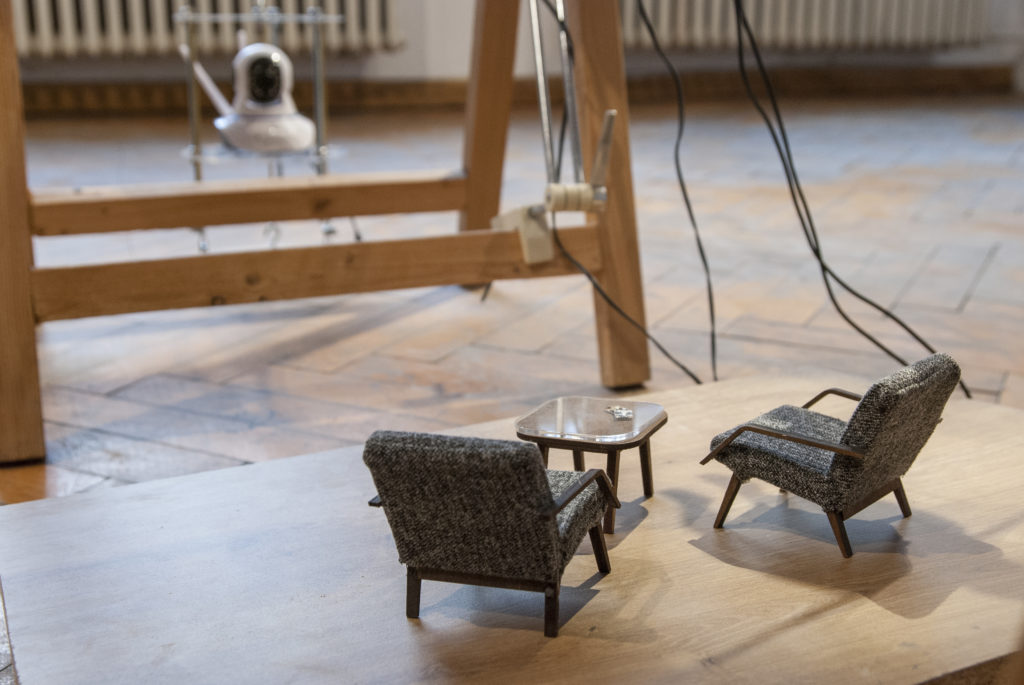
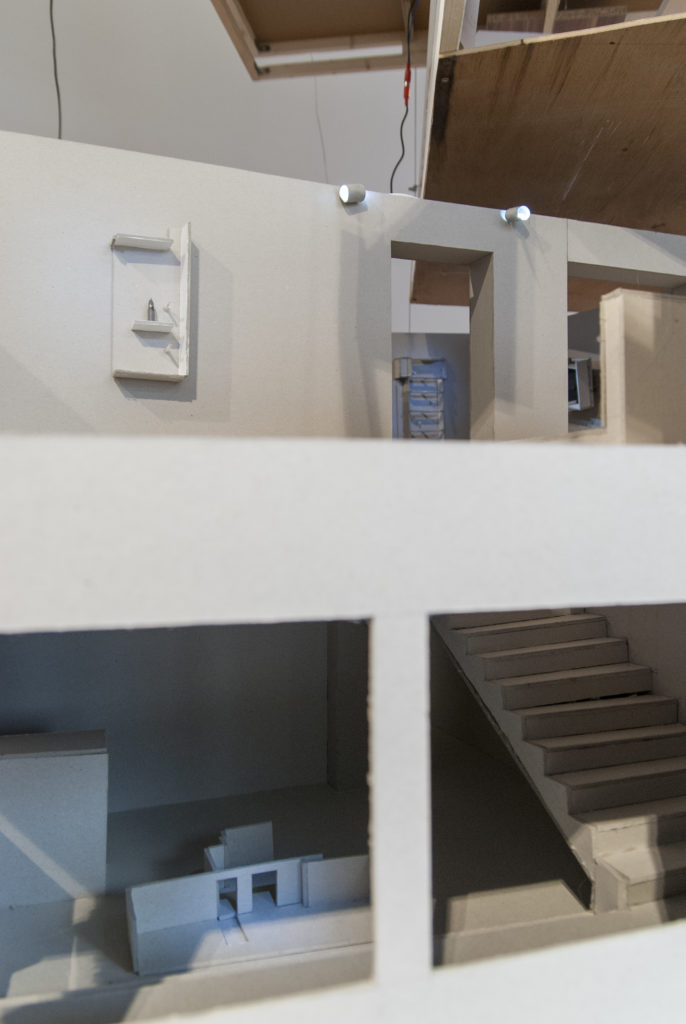
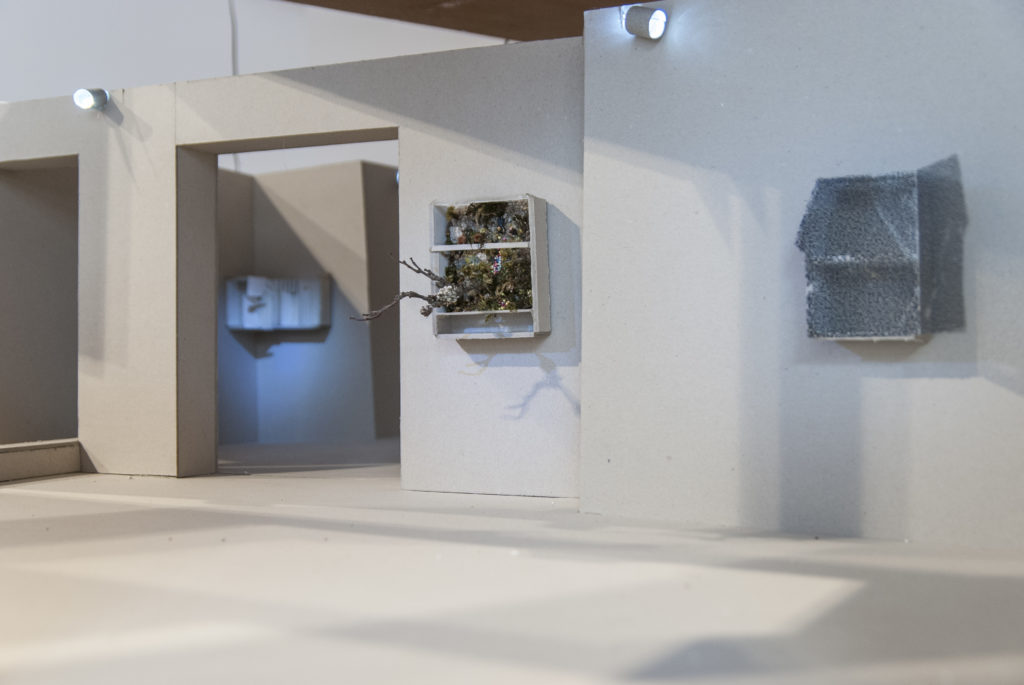
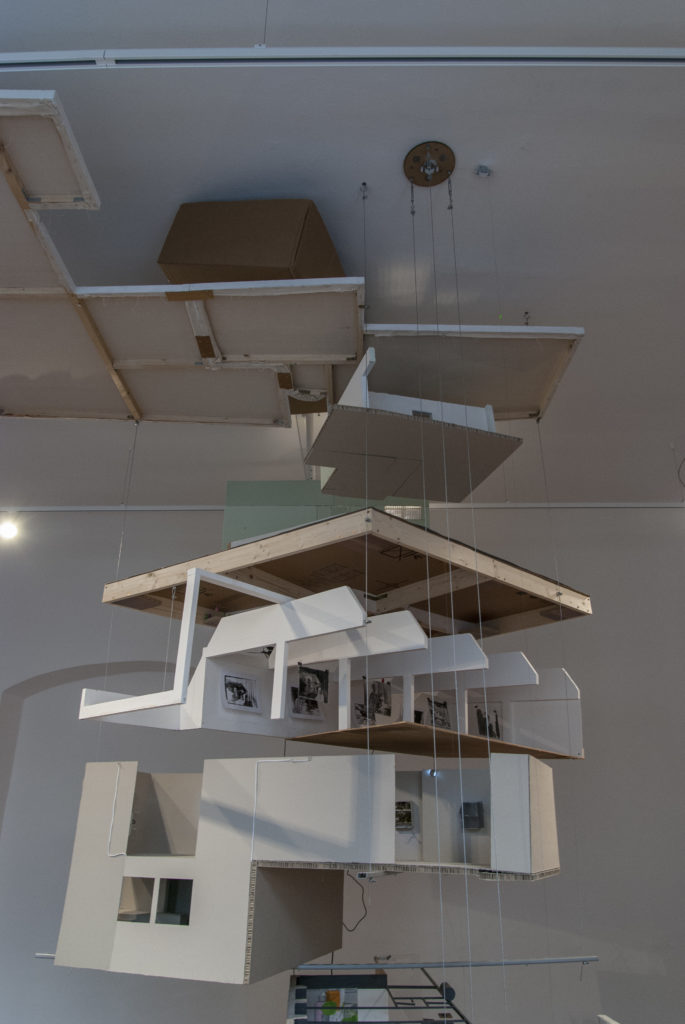
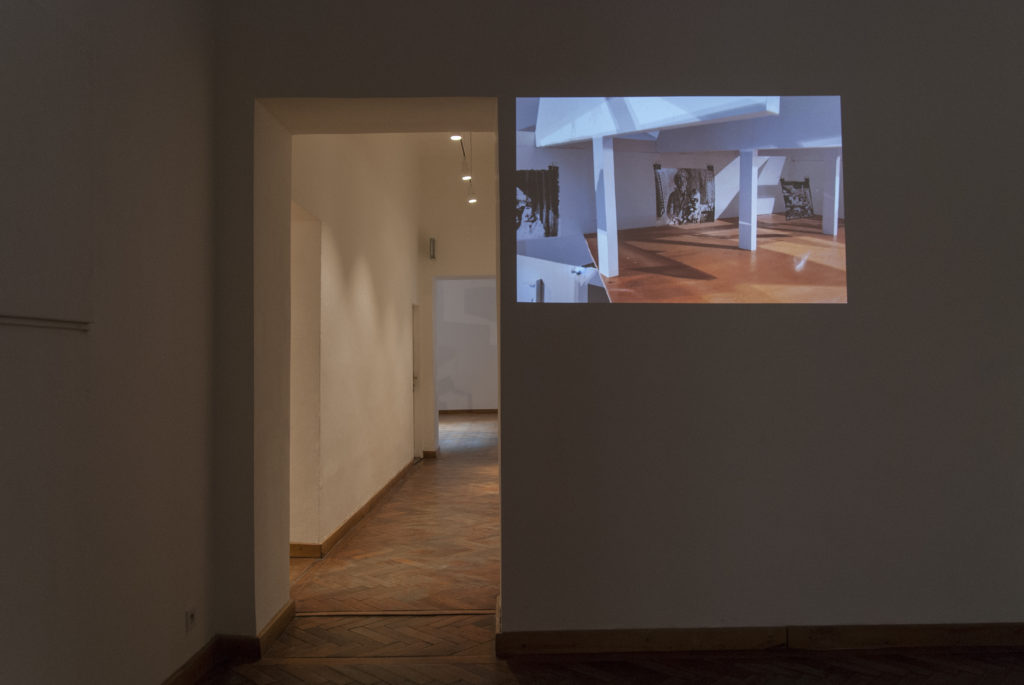
Projekt Breaking (b)it – Diany Cencer Garafovej má tak trocha záhadný názov, ktorý sa viaže na výskum a úvahy o možnostiach poznania v jej teoretickej doktorandskej práci (školiteľ prof. Daniel Fischer). Jej téma bola inšpirovaná otázkami o povahe sveta, ako ich rieši fyzika a jej interpretačné modely skúmania vesmíru, teda toho, či a ako je svet poznateľný. Breaking je odvodené od Symmetry breaking, teda narušenia symetrie. A prečo ide v tejto súvislosti o „narušenie symetrie“, ktoré rezonuje aj v názve? Garafovú totiž zaujímajú najmä spontánne procesy narúšania tejto symetrie ako pravidelného usporiadania. Podľa súčasných vedeckých teórií sa totiž takéto procesy zdajú byť najdôležitejšími pre vznik života, pretože „možnosť našej existencie spočíva v nedokonalosti prírody, nie v dokonalosti prírodných zákonov a práve narušenia symetrie umožňujú, že sa nám vesmír prejavuje v nekonečnej rozmanitosti zložitých stavov, avšak so zachovaním určitej symetrie – teda je zložitý a jednoduchý zároveň.“ A čo znamená v názve ono „(b)it“? Poznanie je založené na informácii. Tu sa Diana Cencer Garafová odvoláva na ideu Johna Wheelera „It from bit“, ktorá popisuje svet zložený z informácií, a ktorá následne ovplyvnila i ďalších fyzikov. Tieto otázky vyústili do skúmania vzťahu it a bit – teda na jednej strane idea / nápad / informácia, na strane druhej hmota / tvar / forma. Premietli sa aj do jej výstavného projektu, kde skúma vzťah reality a modelu a vytvára zmenšeniny inštalácií (možných i nemožných) umiestnené v modeloch existujúcich bratislavských galérií v mierke 1:10. Viaceré modely ukrývajú vo svojom vnútri mini inštalácie založené na optickej ilúzii.
Projekt pre Galériu Medium pritom nie je prvý, ale nadväzuje na predchádzajúce verejné prezentácie diel, ktoré už autorka zrealizovala. Tentoraz sú ale modely výstavných priestorov v galérii navŕšené v asymetrickom architektonickom útvare jeden na druhom a prezentované tak, že niektoré z modelov sú divákovmu pohľadu dostupné priamo, niektoré však vidí iba sprostredkovane – pomocou kamery, ktorá sa neprestajne pohybuje po vertikálnej osi od podlahy po strop a sníma pohľad vždy do určitého konkrétneho modelu výstavného priestoru s vloženou optickou ilúziou.
Tento pohľad je priamo premietaný v jednej zo vstupných miestností, a tak umožňuje divákovi nazrieť aj do modelov, ktoré sú vysoko nad jeho hlavou. Dianine modely výstavných miestností sú tak akýmisi analógiami teoretických interpretačných modelov poznávania sveta. Sme obeťami týchto modelov, ktoré realitu nesprostredkúvajú takú aká je, ale len akú si myslíme, že je? Respektíve nesprostredkúvajú nám tieto modely vždy len určitý zorný uhol pohľadu? Aj v teoretickej fyzike sú totiž skúmané javy izolované od reality, pretože prebiehajú v umelo vytvorených podmienkach, ktoré v „skutočnosti“ neexistujú – podobne ako autorkine predstavy stelesnené v materiálových modeloch. Dôležité sa stáva nie to, čo vidíme, ale ako to interpretujeme. A to je charakteristické aj pre výtvarné umenie, kde má divák rozhodujúce postavenie pri interpretácii diela – rozšifrovaní jeho znakov, dekódovaní správy, zasadení do kontextu, pochopení jeho zmyslu, atď. Ako konštatuje autorka vo svojej dizertačnej práci, úplné poznanie reality nie je možné, pretože ju nedokážeme pozorovať bez toho, aby sme boli jej súčasťou, a každá snaha o objektivitu je vopred márna, pretože subjektívny zážitok je spojený s každým naším pozorovaním.
Zora Rusinová
Photo: Ján Šipöcz
Video: Martin Jirku